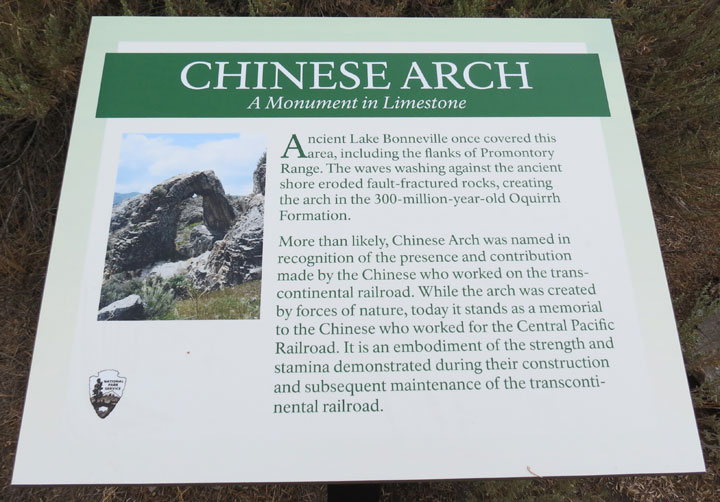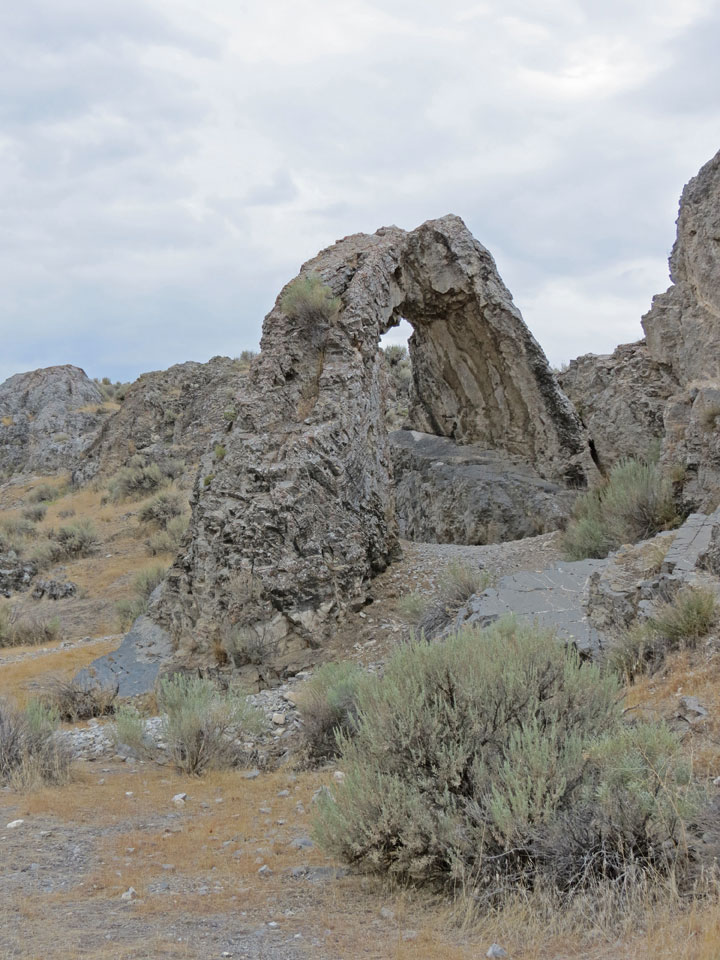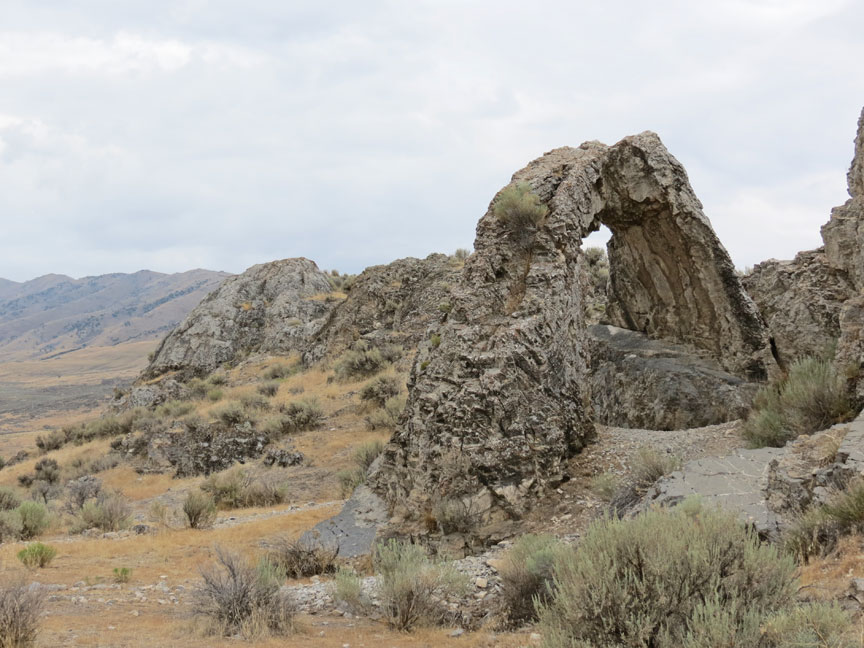

Golden Spike National Historic Site
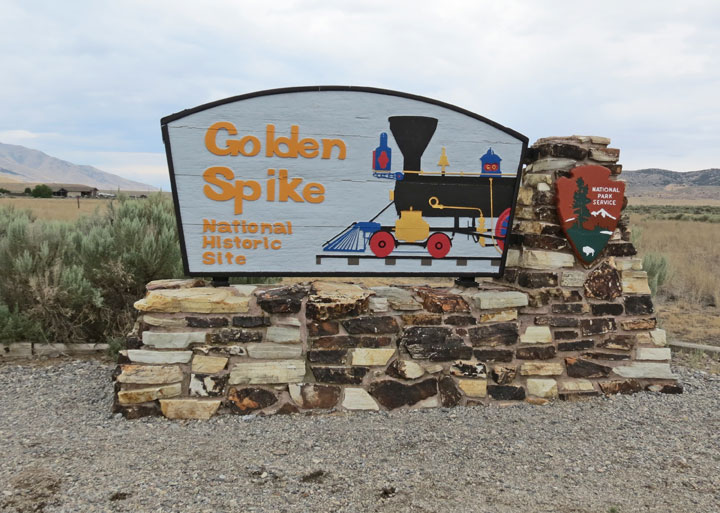
The "Golden Spike" is the ceremonial final spike driven by Leland Stanford to join the rails of the First Transcontinental Railroad across the United States connecting the Central Pacific and Union Pacific railroads on May 10, 1869, at Promontory Summit, Utah Territory. The term "Last Spike" has been used to refer to one driven at the usually ceremonial completion of any new railroad construction projects, particularly those in which construction is undertaken from two disparate origins towards a meeting point. The "Last Spike" now lies in the Cantor Arts Center at Stanford University.

location of "Last Spike"
Completing the last link in the Transcontinental Railroad with a spike of gold was the brainchild of David Hewes, a San Francisco financier and contractor. The spike had been manufactured earlier that year especially for the event by the William T. Garratt Foundry in San Francisco. Two of the sides were engraved with the names of the railroad officers and directors. A special tie of polished California laurel was chosen to complete the line where the spike would be driven. The ceremony was originally to be held on May 8, 1869 (the date actually engraved on the spike), but it was postponed two days because of bad weather and a labor dispute that delayed the arrival of the Union Pacific side of the rail line.

special tie
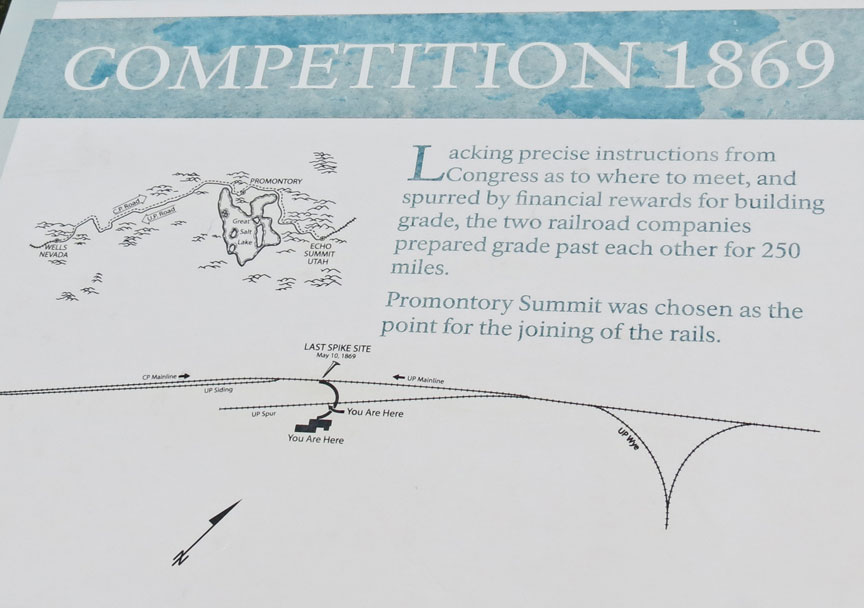
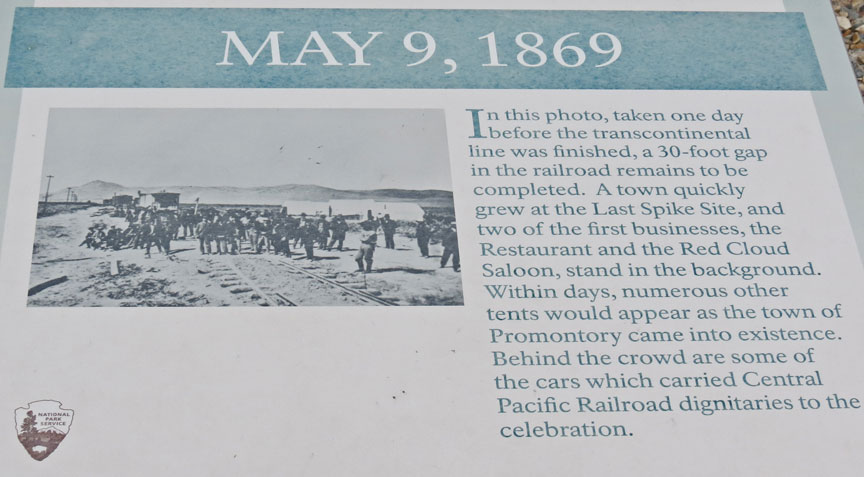
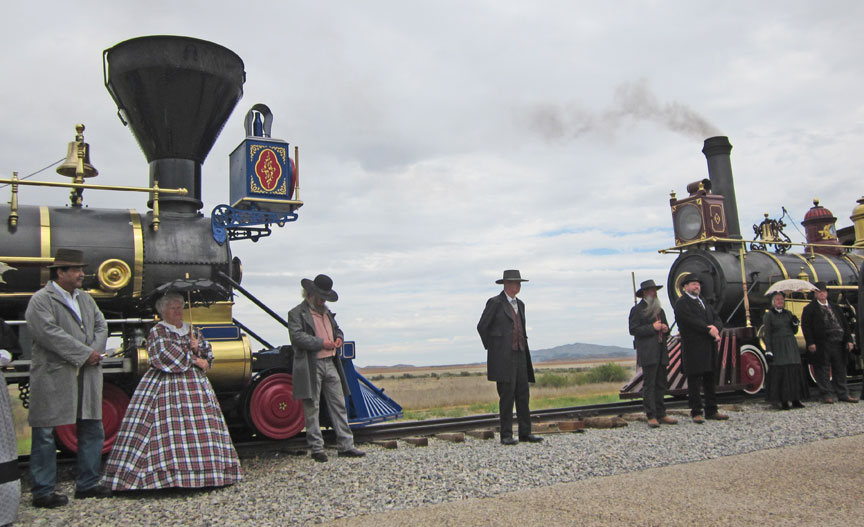
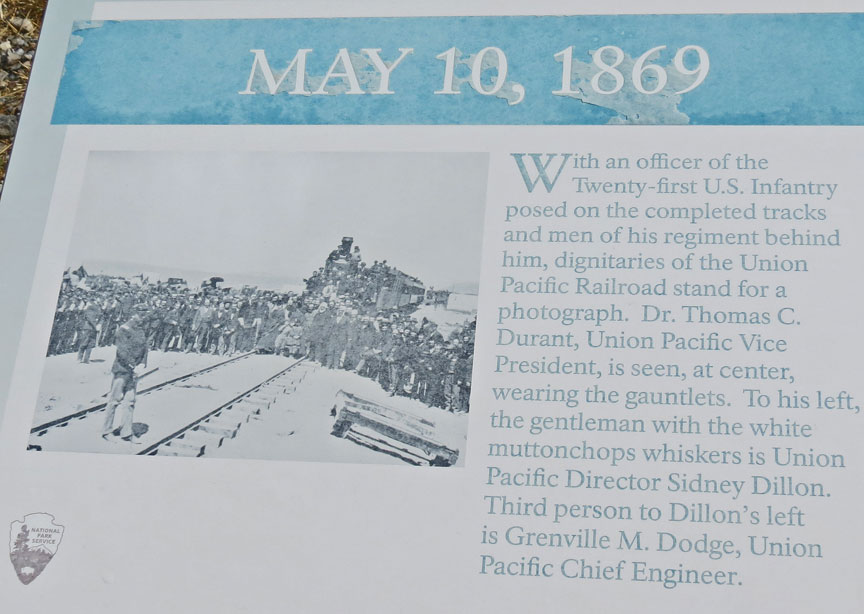
On May 10, in anticipation of the ceremony, Union Pacific No. 119 and Central
Pacific No. 60 (better known as the Jupiter) locomotives were drawn up
face-to-face on Promontory Summit. It is unknown how many people attended the
event; estimates run from as low as 500 to as many as 3,000; government and
railroad officials and track workers were present to witness the event.
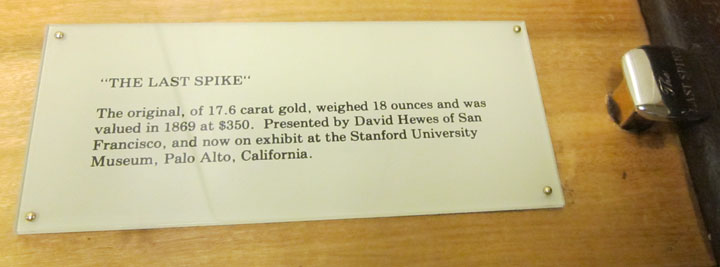
Last Spike
engraved
"May God continue the unity of our Country, as this Railroad unites the two
great Oceans of the world."
Presented by David Hewes San Francisco.
A second golden spike, exactly like the one from the ceremony, was cast and
engraved at the same time. It was held, unknown to the public, by the Hewes
family until 2005. This second spike is now on permanent display, along with
Thomas Hill's famous painting The Last Spike, at the California State Railroad
Museum in Sacramento
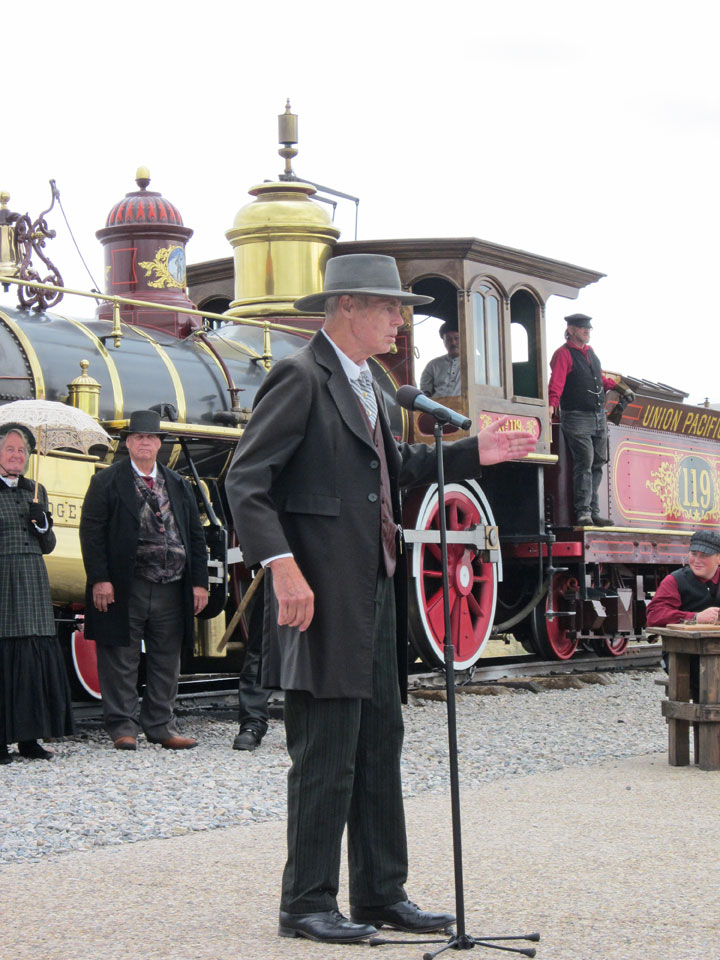
Stanford reenactor
With the locomotives drawn so near, the crowd pressed so closely around Stanford and the other railroad officials that the ceremony became somewhat disorganized, leading to varying accounts of the actual events. Contrary to the myth that the Central Pacific's Chinese laborers were specifically excluded from the festivities, A.J. Russell stereoview No. 539 shows the "Chinese at Laying Last Rail UPRR" (8 Chinese laid the last rail, and three of these men, Ging Cui, Wong Fook, and Lee Shao, lived long enough to also participate in the 50th anniversary parade. At the conclusion of the ceremony, the Chinese participating were honored and cheered by the CPRR officials.

To drive the final spike, Stanford lifted a silver spike maul and drove the
spike into the tie, completing the line. Stanford and Hewes missed the spike,
but the single word "done" was nevertheless flashed by telegraph around the
country. In the United States, the event has come to be considered one of the
first nationwide media events. The locomotives were moved forward until their
"cowcatchers" met, and photographs were taken. Immediately afterwards, the
golden spike and the laurel tie were removed, lest they be stolen, and replaced
with a regular iron spike and normal tie. At exactly 12:47 pm, the last iron
spike was driven, finally completing the line.
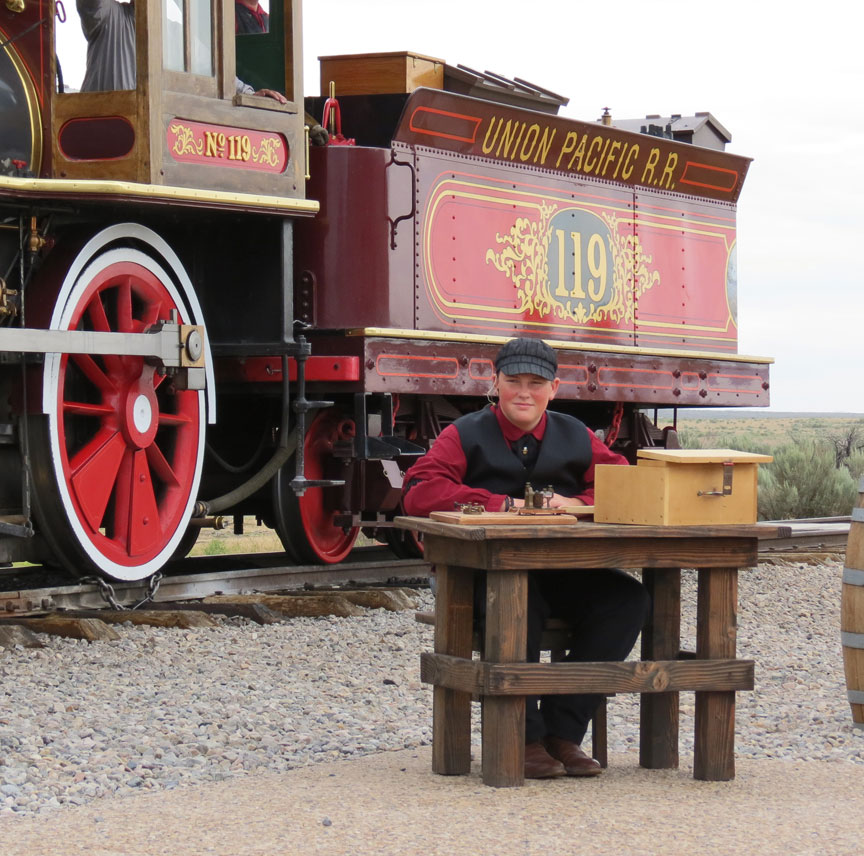
telegraph operator
After the ceremony, the Golden Spike was donated to the Stanford Museum (now Cantor Arts Center) in 1898. The last laurel tie was destroyed in the fires caused by the 1906 San Francisco earthquake.

Image of the celebration following the driving of the "Last Spike" at Promontory
Summit, U.T., May 10, 1869. Because of temperance feelings the liquor bottles
were removed from some later prints.
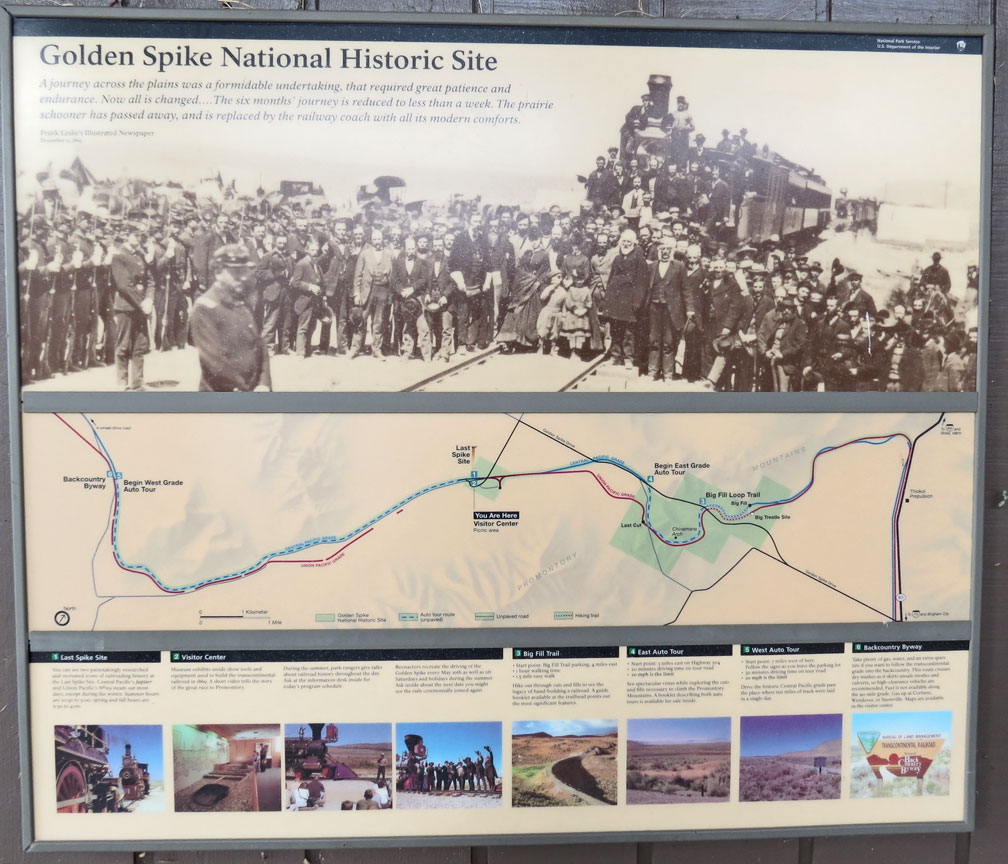
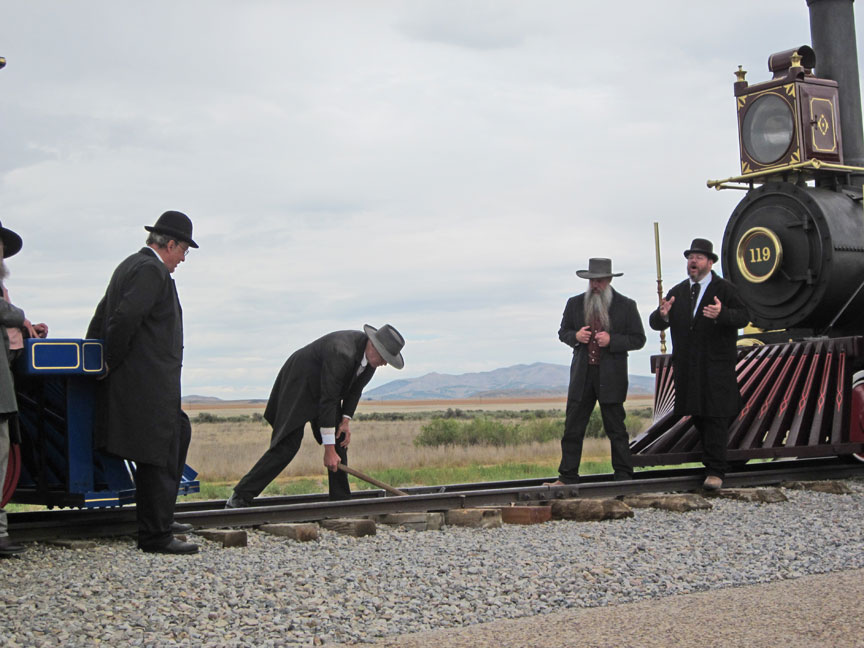
May 10, 1869 Celebration of completion of the Transcontinental Railroad
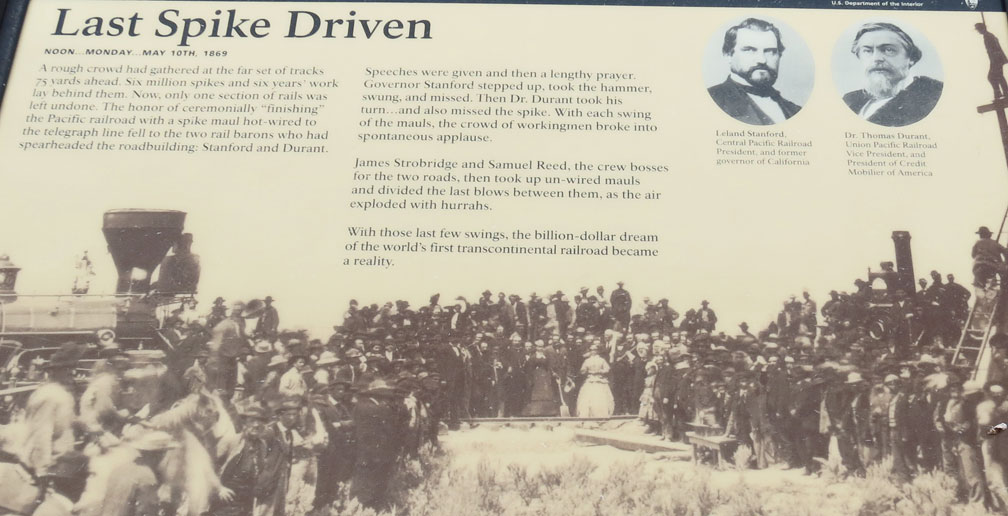

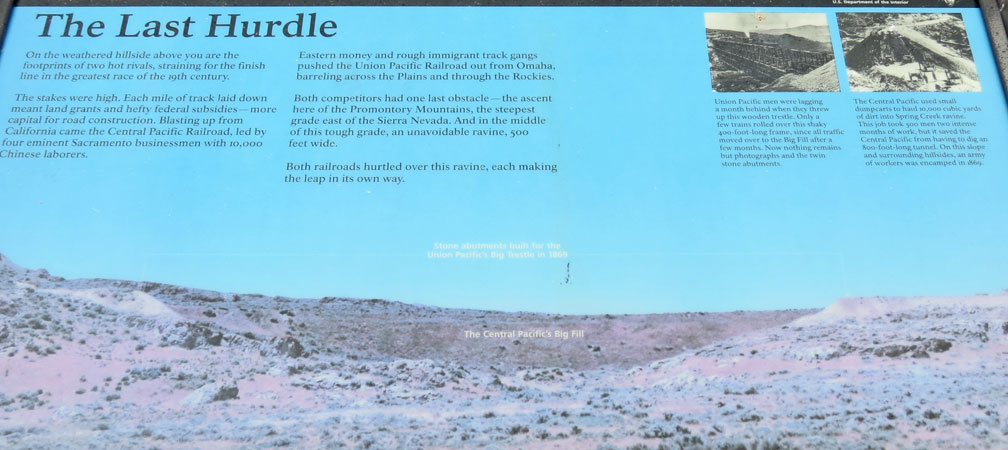

trestle replaced with fill
Although the Promontory event marked the completion of the transcontinental
railroad line, it did not actually mark the completion of a seamless
coast-to-coast rail network: neither Sacramento nor Omaha was a seaport, nor did
they have rail connections until after they were designated as the termini. The
Mossdale Bridge, which was the final section across the San Joaquin River near
Lathrop, California, was finally completed in September 1869 connecting
Sacramento in California. Passengers were required to cross the Missouri River
between Council Bluffs, Iowa, and Omaha, Nebraska, by boat until the building of
the Union Pacific Missouri River Bridge in 1872. In the meantime, a
coast-to-coast rail link was achieved in August 1870 in Strasburg, Colorado, by
the completion of the Denver extension of the Kansas Pacific Railway.
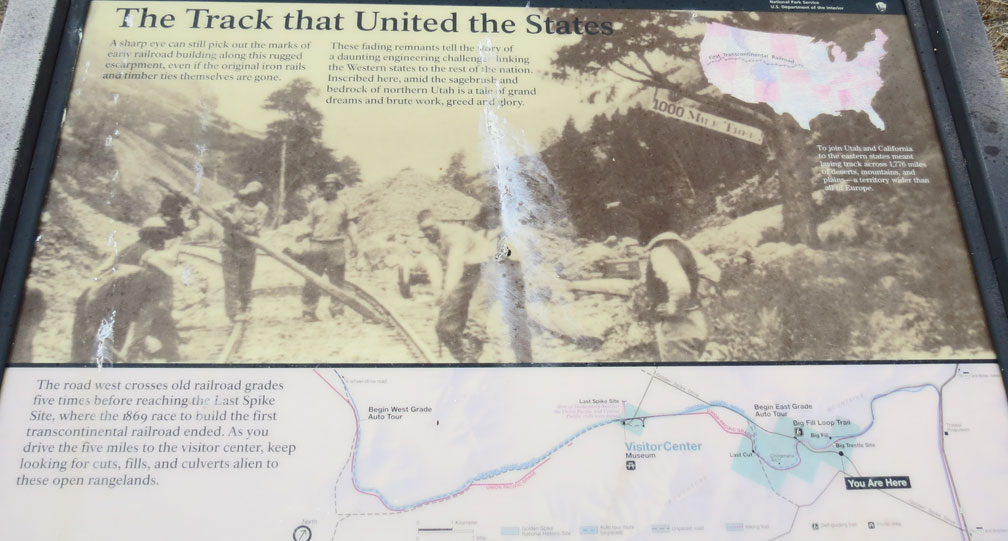
In 1904 a new railroad route called the Lucin Cutoff was built by-passing the
Promontory location to the south. By going west across the Great Salt Lake from
Ogden, Utah, to Lucin, Utah, the new railroad line shortened the distance by 43
miles and avoided curves and grades. Main line trains no longer passed over
Promontory Summit.
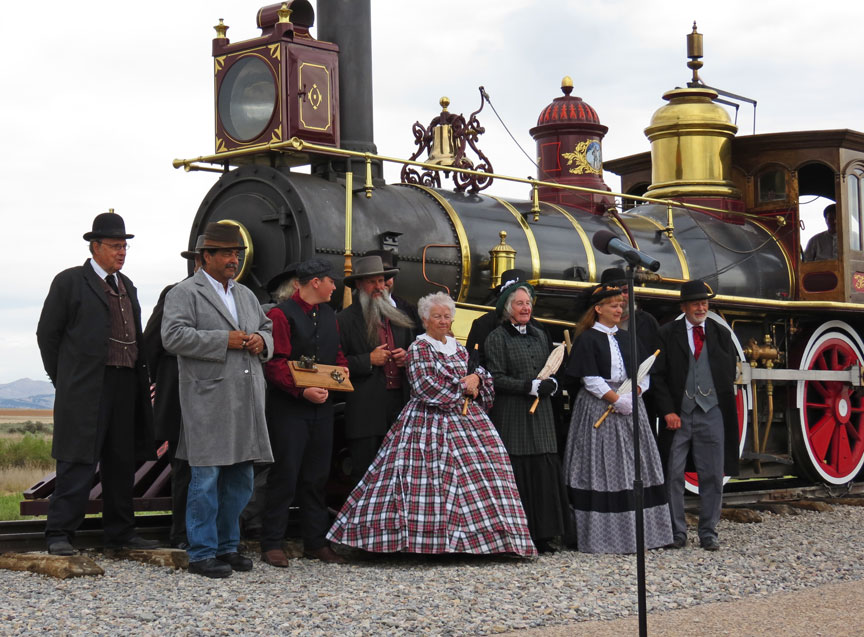
In 1942, the old rails over Promontory Summit were salvaged for the war effort;
the event was marked by a ceremonial "undriving" of the last iron spike. The
original event had been all but forgotten except by local residents, who erected
a commemorative marker in 1943. The following year a commemorative postage stamp
was issued to mark the 75th anniversary. The years after the war saw a revival
of interest in the event; the first re-enactment was staged in 1948.

In 1957, Congress established the Golden Spike National Historic Site to
preserve the area around Promontory Summit as closely as possible to its
appearance in 1869. O'Connor Engineering Laboratories in Costa Mesa, CA designed
and built working replicas of the locomotives present at the original ceremony
for the Park Service. These engines are drawn up face-to-face each Saturday
during the summer for a re-enactment of the event.
The Utah state quarter.
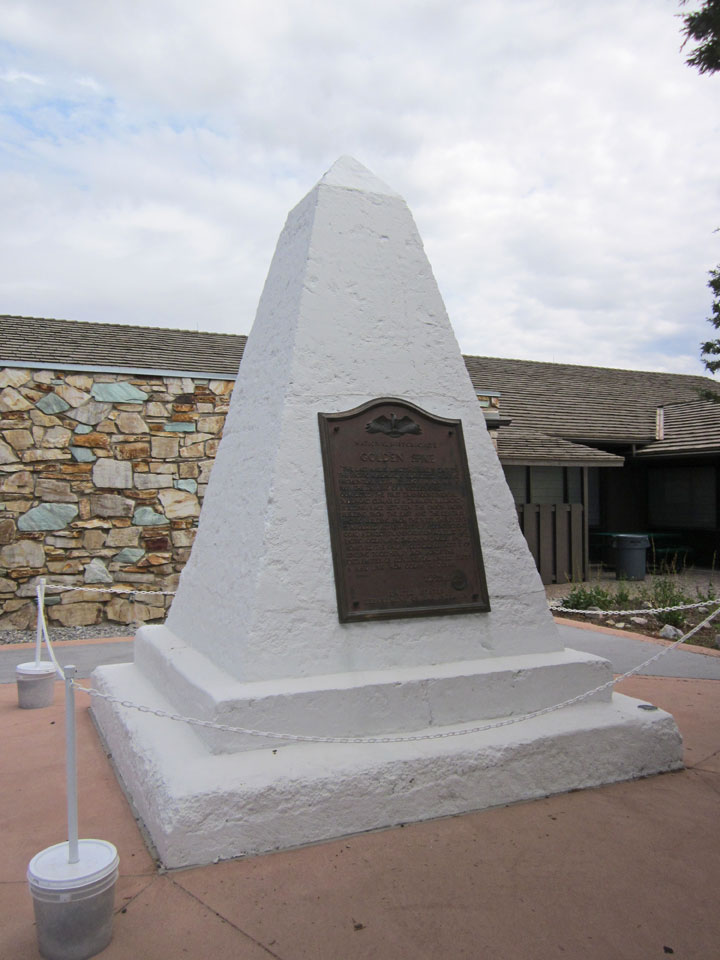
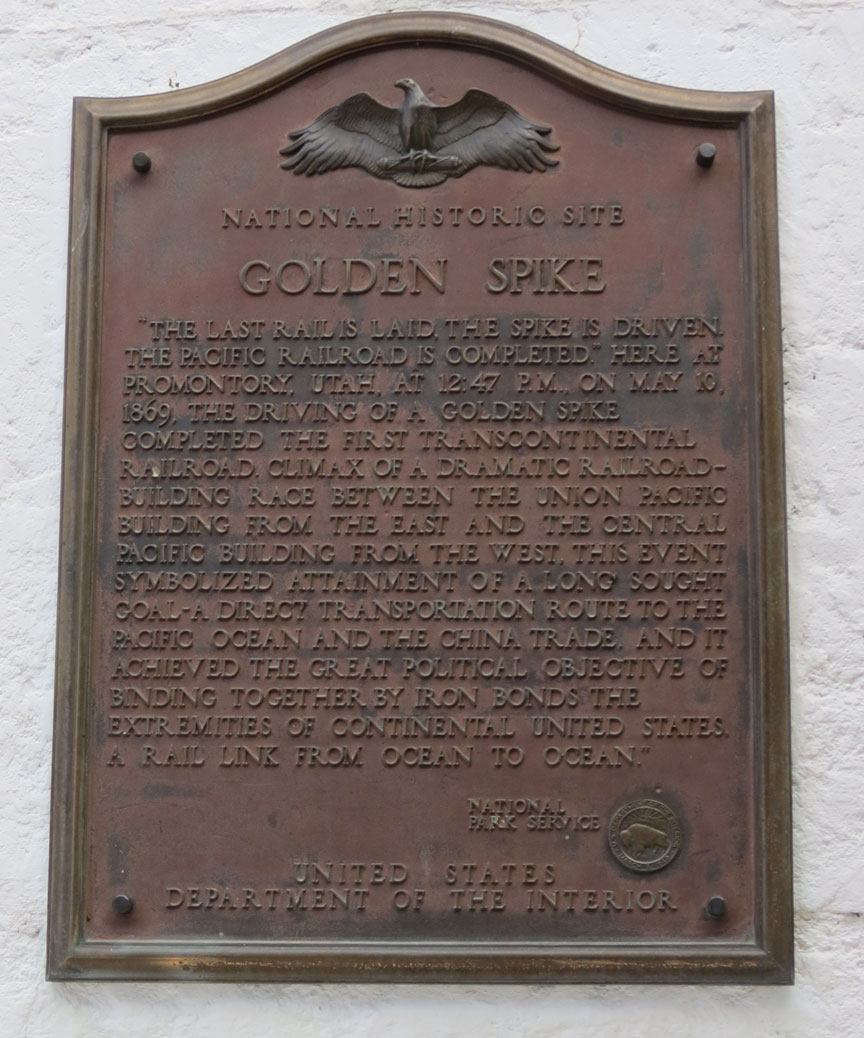
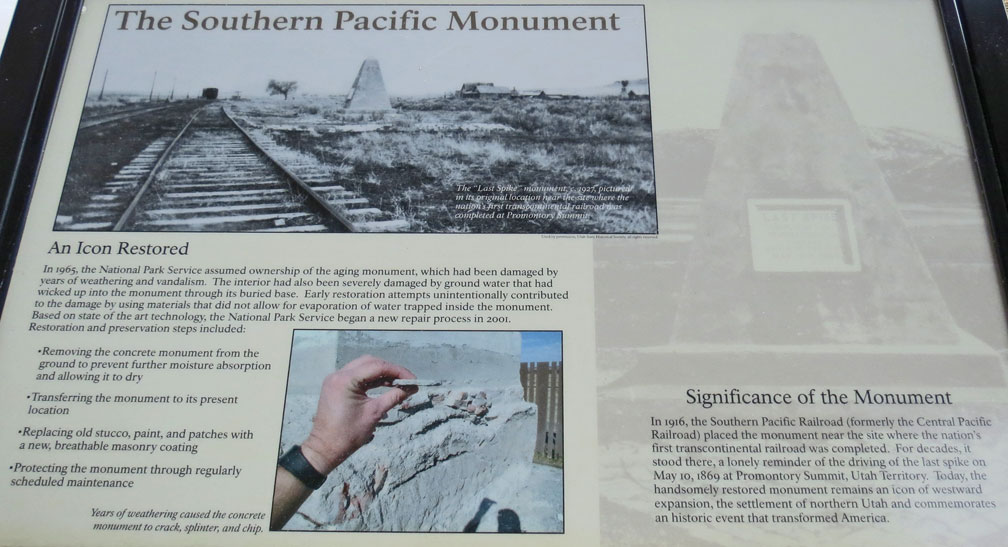
For the May 10, 1969, centennial of the driving of the last spike, the High Iron
Company ran a steam powered excursion train round trip from New York City to
Promontory. The Golden Spike Centennial Limited transported over 100 passengers
including, for the last leg into Salt Lake City, actor John Wayne. The Union
Pacific Railroad also sent a special display train and the US Army
Transportation Corp sent a steam powered 3-car special from Fort Eustis,
Virginia.

handcarts used on the fill
On May 10, 2006, on the anniversary of the driving of the spike, Utah announced that its state quarter design would be a depiction of the driving of the spike. The Golden Spike design was the conception of Syracuse, Utah Junior High School special education students under the direction of instructor Scott Price. The design was selected as the winner from among several others by Utah's governor, Jon Huntsman, Jr., following a period during which Utah residents voted and commented on their favorite of three finalists.

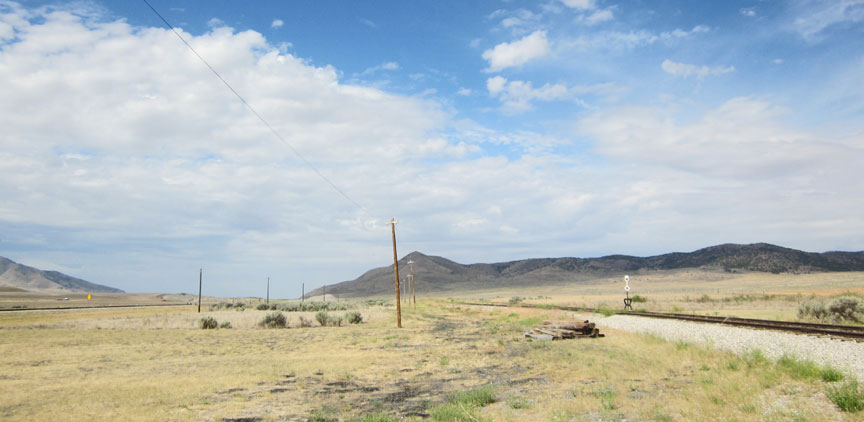
the site in 2012
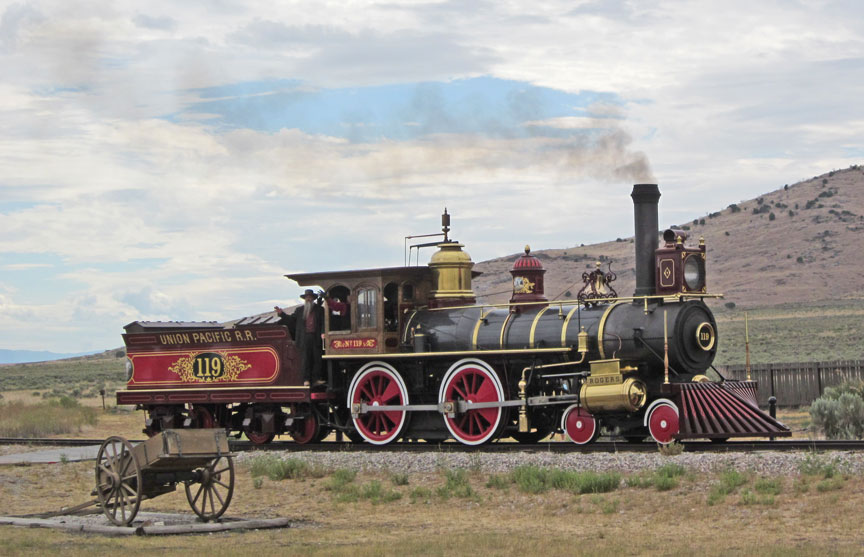
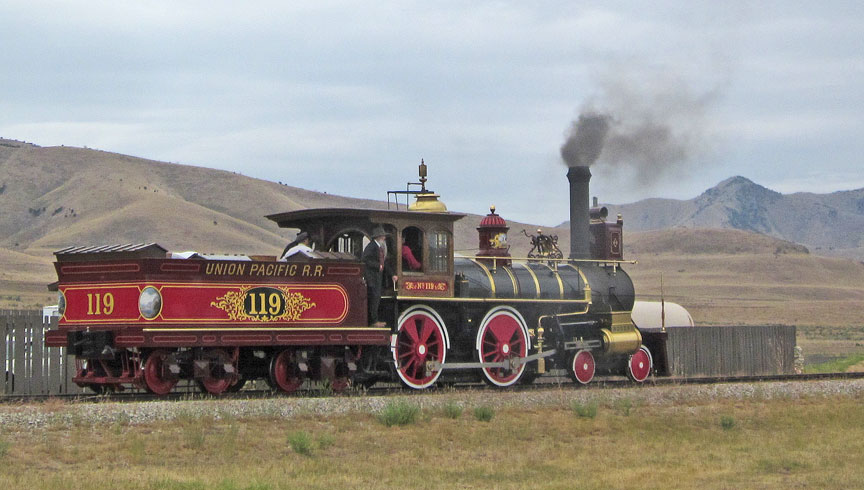


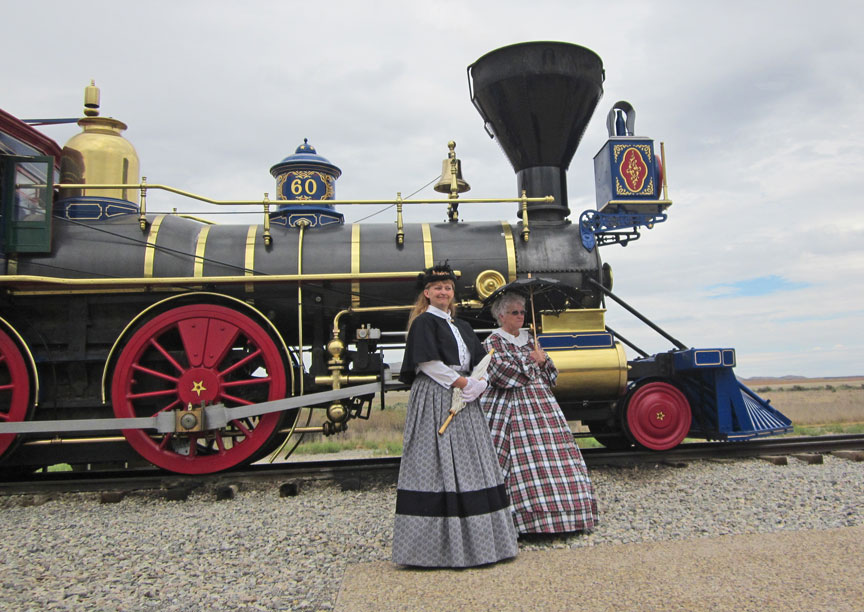
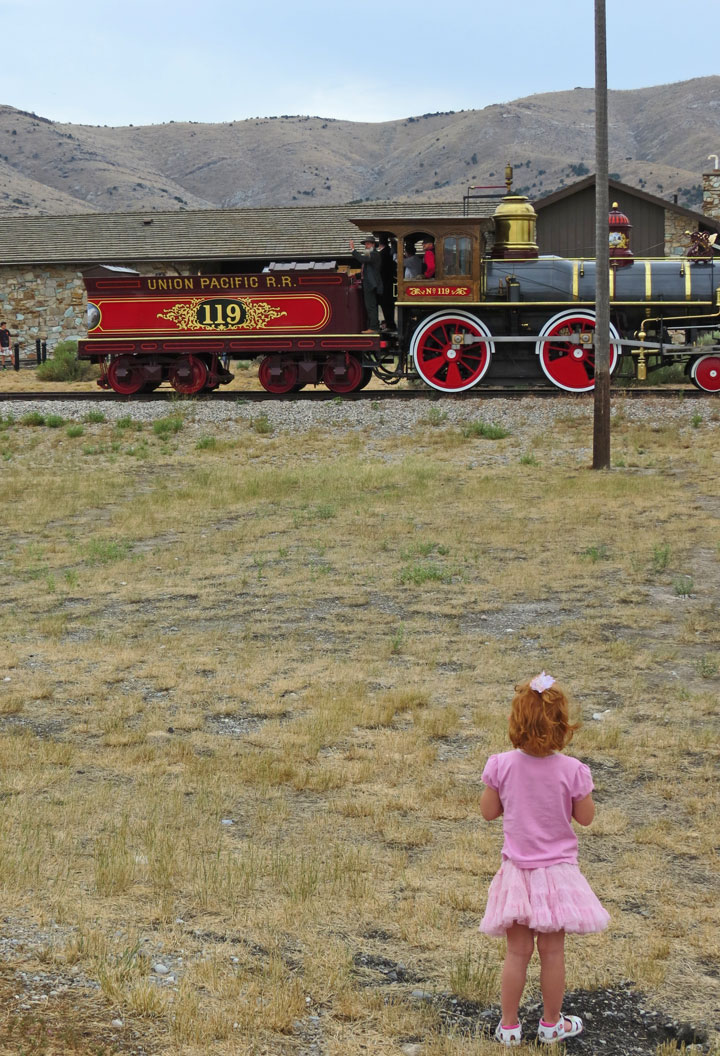
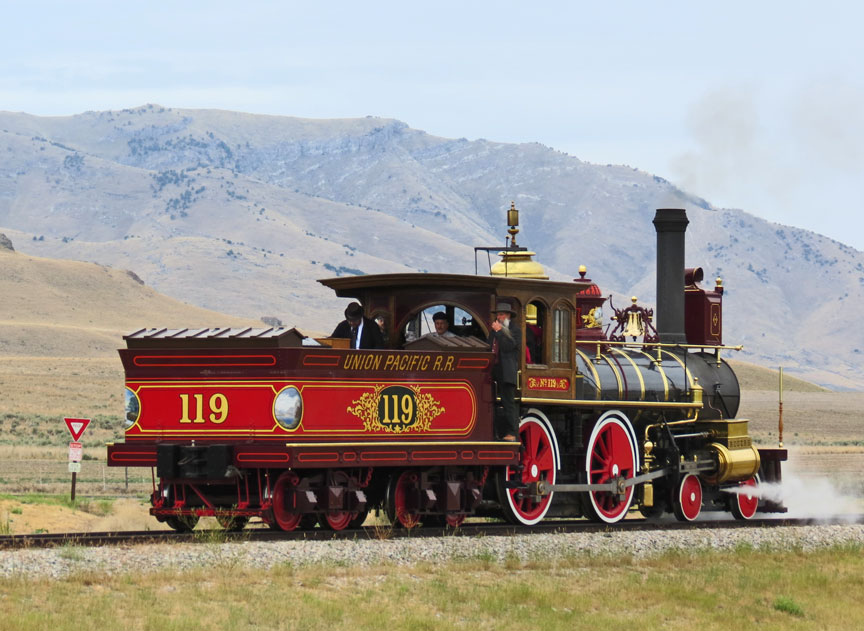
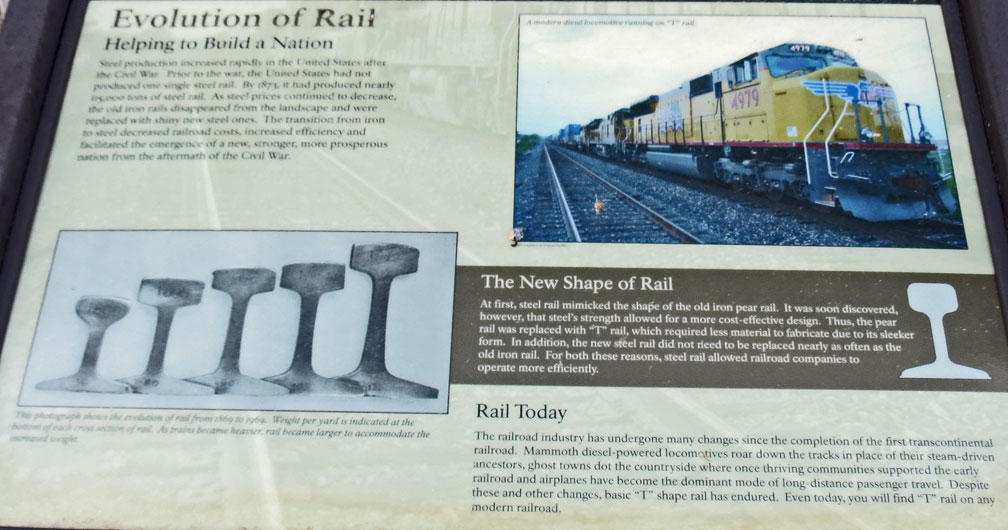
evolution of rail
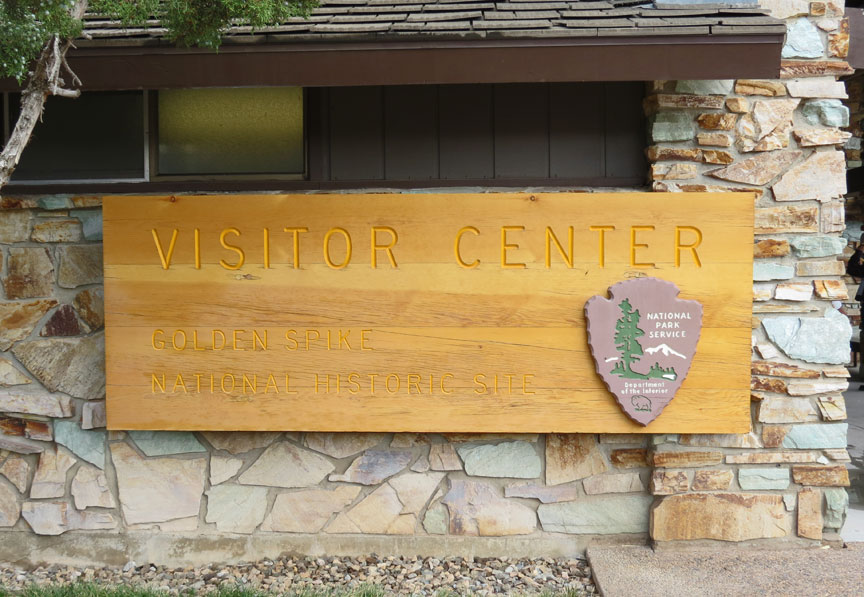
A the current site of the Golden Spike National Historic Site, replicas of No.
119 and the Jupiter face each other to re-enact the driving of the Golden Spike.
Text from Wikipedia
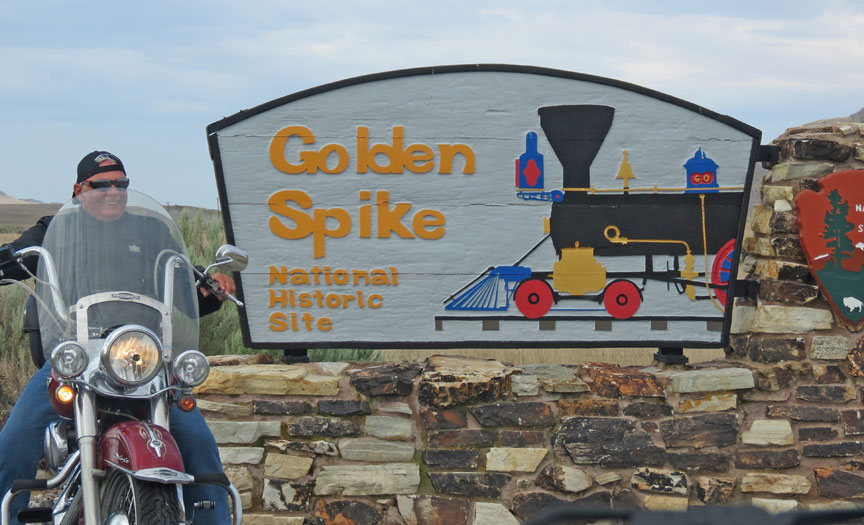
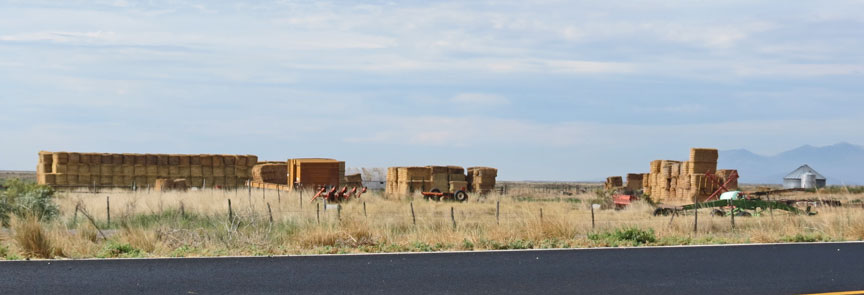
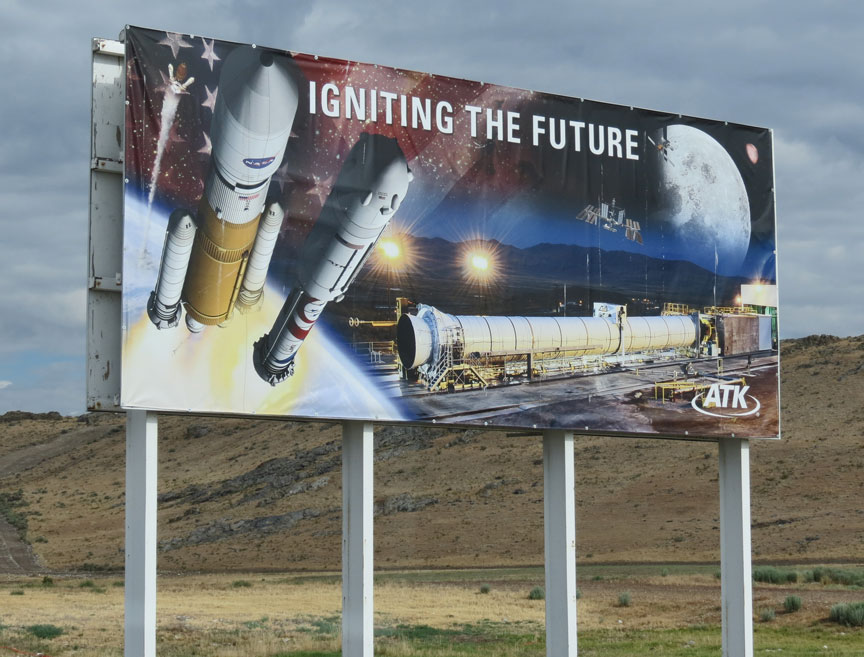
Rocket engine testing site
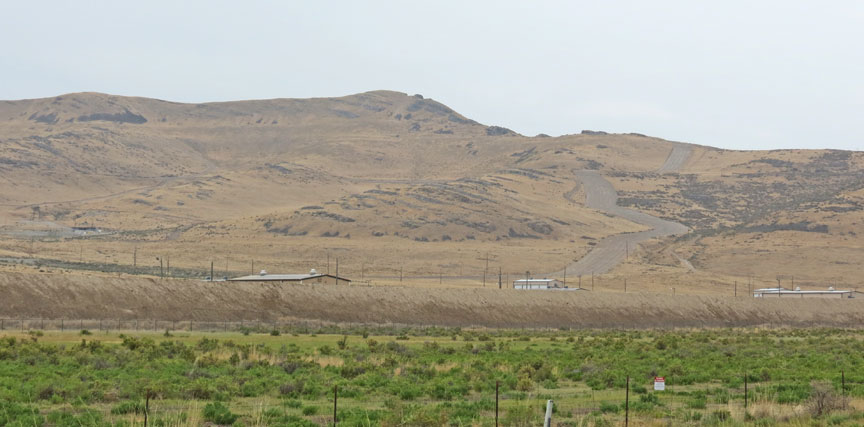
test stands
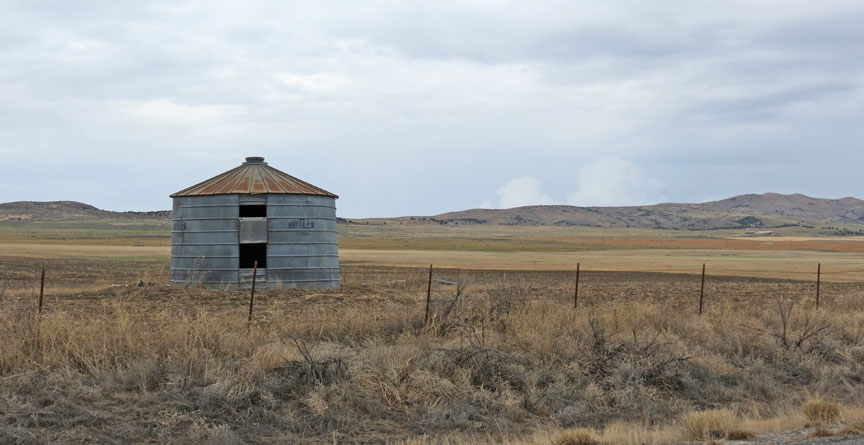
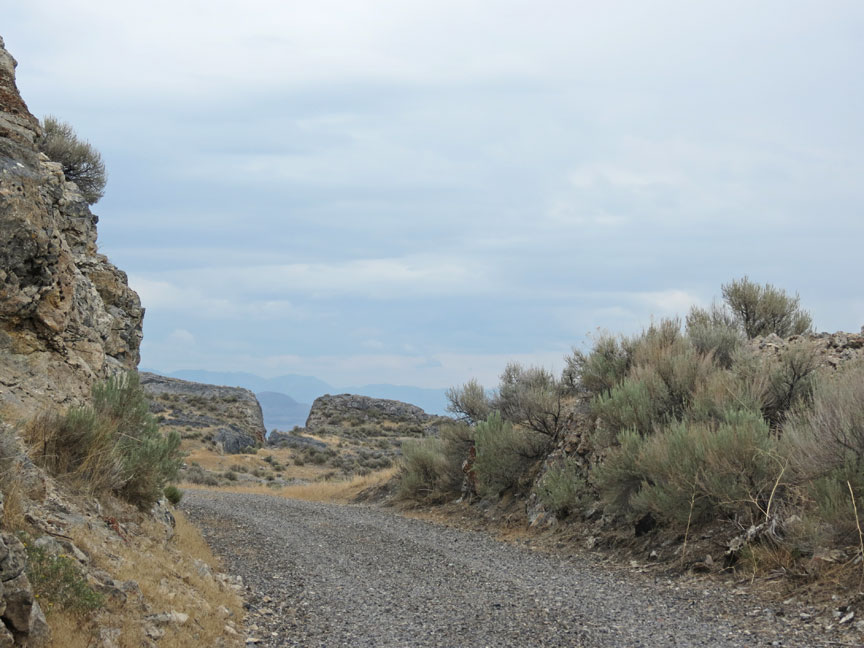
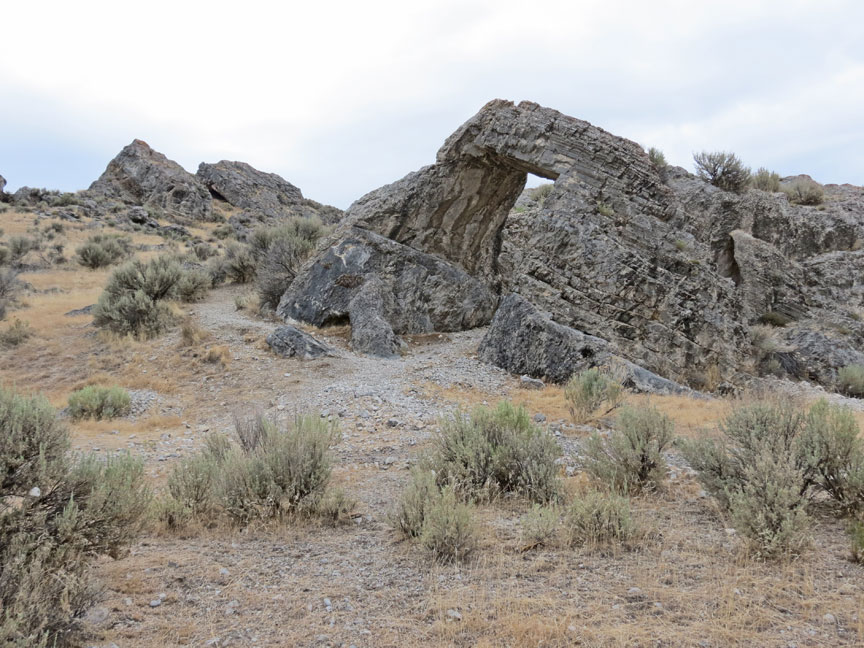
Chinese Arch
